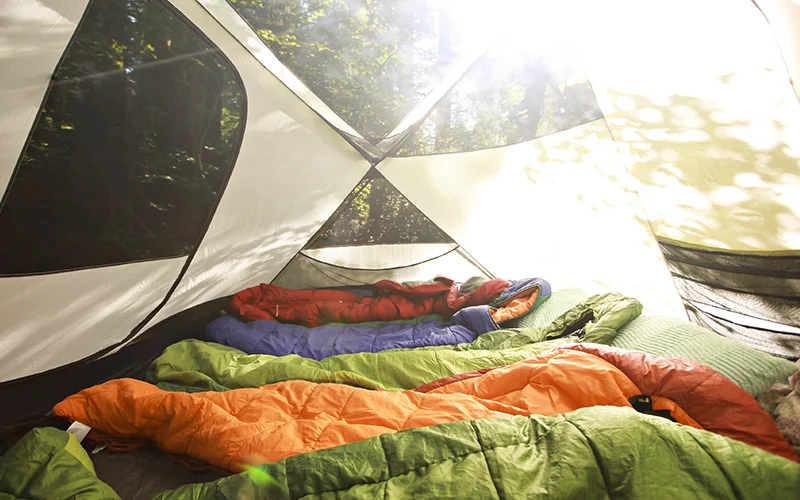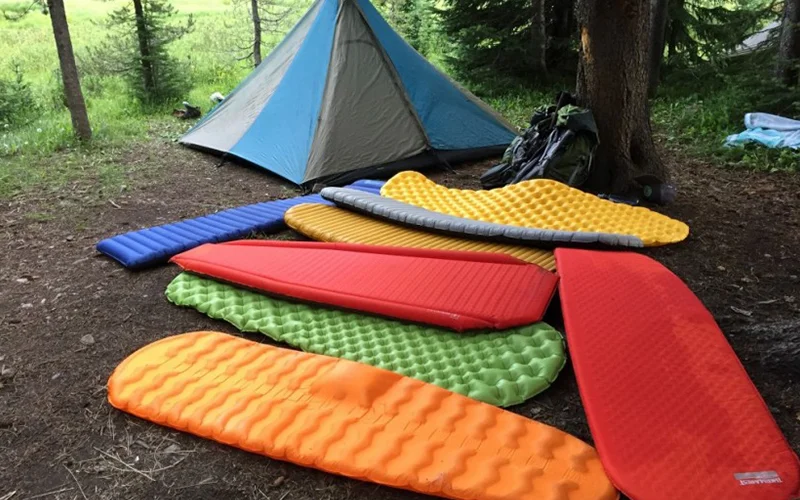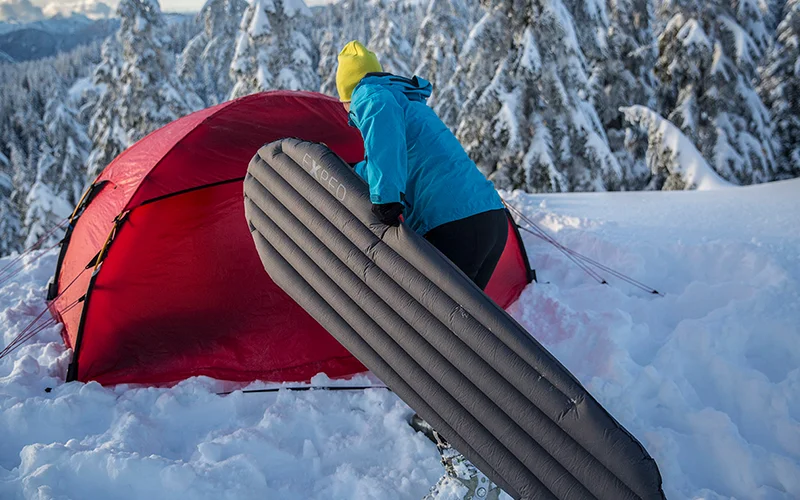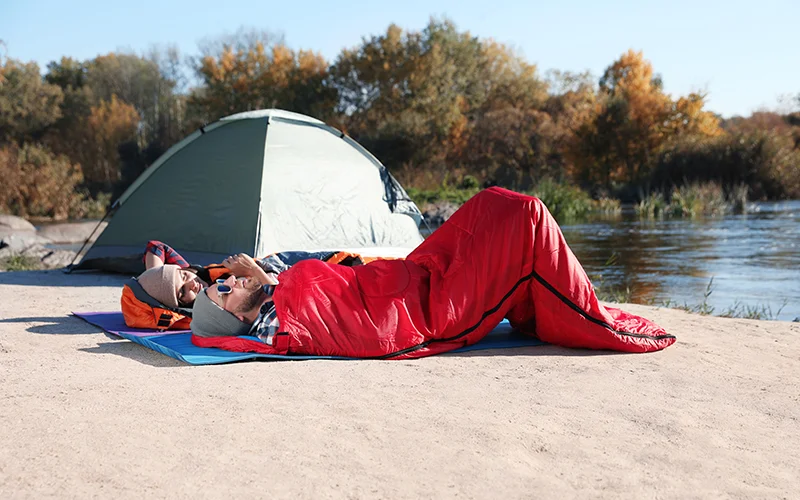Best Sleeping Mats – How to Choose the Right One

Sleeping under the stars can be an amazing experience, but perhaps only if you have the best sleeping mat. Learn what it takes to make the right choice.
If you’re hunting for outdoor equipment, a sleeping mat should be among your top priorities. If you plan on spending your nights in nature, you’ll want to come prepared. Otherwise, you’re not going to have a very good time.
To get the most out of your adventures, you need to find the best outdoor sleeping pad that money can buy. But this doesn’t mean the same thing for everyone. There are several features that you need to look into before you make your final decision.
To make this easier for you, we’ll be highlighting the most important considerations in the following paragraphs.
1. Intended Use
There are many types of sleeping mats out there. Each of them comes with a different set of features (which we’ll discuss further down this guide). But for now, let’s go over the most important question that you’ll use as a starting point:
Why do you need a sleeping mat?
The answer will determine the right type of sleeping mat for your needs, as well as other features to consider.
For example, let’s say that you’re going bikepacking or backpacking. In this case, you’ll want to go with the best self-inflating sleeping mat or a regular air pad. Both options pack small, offer great comfort, and are fairly lightweight. Of course, the best backpacking sleeping pads come in many varieties, so you’ll have to look at the specs to find the right one.
As for camping, there are many things to consider. If you’re car camping, the best sleeping mats would be thick air beds or self-inflating pads. In this case, you don’t have to worry about the weight so you should just focus on comfort, size, and additional features.
But if you plan on going a bit more extreme and camping in the rough and under cold weather, you need a well-insulated air pad. These tend to be bulkier than regular air pads, so the weight might become a concern.
Lastly, you might want to go with closed-cell foam mats if you’re going hiking. The best hiking sleeping pads tend to put a heavy focus on the weight, so they may not be as comfortable or small as air pads. On the other hand, they’re generally well-insulated, so they might be a great option for the cold weather.
Before you start browsing for the best sleeping mats, make sure that you know exactly where you’ll be using them. Once you have this figured out, you can dig a bit deeper into the specs.

2. Size and Shape
The last thing you need is a sleeping mat that’s too small. On the other hand, those that are too large can add weight and inconvenience. How do you find a good balance?
As a rule of thumb, the best sleeping mat is one that should span your shoulders and hips at the very minimum. These smaller options are usually around 120cm long, so you can use clothes or other pieces of gear for added support. In general, you should only go with this option if you have to cut down on the weight.
But if you can carry a bit more, you can go for a regular (180cm) or long (200cm) sleeping pad. Of course, these are just some ballpark figures may not apply to every model.
As far as the width goes, almost all single sleeping mats are around 50cm wide. This should be enough to ensure a comfortable rest. But if you have a tendency to roll around in your sleep, you might want to consider something larger.
What you should consider here is the shape of your best sleeping mat. If you don’t move and sleep only on your back, a mummy-shaped mat should do the trick. It shaves off some space to cut down on the mat’s weight and bulkiness.
But if you’re not a restful sleeper, you should go with a wider rectangular pad. It will ensure that you don’t roll off and better protect you from dirt, water, and other elements. For added protection, you can go for a mat that has larger side baffles. These are also among the best options for children.

3. Insulation and R-Value
Unless you need the best sleeping mat for fair weather only, this is one of the most important features that you need to think about. If your pad isn’t properly insulated, sleeping in colder conditions can be a bad experience. You surely don’t want the cold to creep up on you in your sleep.
Because of this, people compare the best sleeping mats based on the R-value. It shows how good the mat is at resisting the flow of heat. The higher the R-value, the better the mat’s insulation.
The R-value scale is 1 to 10, although there are some heavy-duty mats that go beyond. For reference, the best camping mats for optimal weather tend to have an R-value of 2 to 5. Anything higher is generally considered enough for winter camping.
Obviously, the first thing that you’ll want to do is to check the temperature of your destination. But this isn’t enough to estimate the real-life R-value that you’ll need. For example, did you know that sleeping on snow is warmer than sleeping on a rocky ground during the winter? This is because rocks are a much better conductor of heat than snow. When the outside temperatures drop below zero, you’ll want to put your sleeping mat over a layer of snow. If this isn’t possible, you’ll need a mat with a higher R-value.
Another thing that influences R-value is the inflation level. Having more air, an insulator, in your mat will make it warmer. However, this might also make it harder, so you’ll have to sacrifice comfort in some cases.
If you plan on exploring the great outdoors in the winter, it’s always best to go the highest R-value possible. It’s always better to have more insulation than not enough. As a bonus tip, you might want to place a foam mat on top of your sleeping pad in extremely cold days. This adds more insulation and gives you more comfort if you’re using an air mat.
4. Durability
While sleeping mats aren’t the most expensive outdoor equipment, the best sleeping mat should still last for a long time. This is why you need to be very careful when choosing the right option.
As you can imagine, inflatable mats are less durable than foam mats. If you decide to go with them, you need to be aware of your surroundings. One sharp rock or another object and you might end up sleeping on the floor. This is why you should always choose your spot very carefully.
Aside from this, always take a look at the denier rating of the sleeping mat cover. This measurement represents the thickness of the individual fibre threads. In most cases, it will be 30 to 70-denier. You should look for at least 40 if you want your pad to last. Of course, the rougher the terrain, the higher the denier rating should be. For the most extreme conditions, you can find mats of up to 100 deniers.
As far as the actual materials go, nylon and polyester are the most popular choices. Polyester is generally more durable but will also add more weight than nylon. When choosing the material, keep in mind that the best sleeping mats have a reinforced bottom. This makes them less prone to punctures, which are the most common cause of damage.
Lastly, see if a sleeping pad that has multiple air chambers suits your needs. If so, it can be a much more durable option than a single-chamber pad for obvious reason. In the event of a tear, you won’t lose the whole mat.

5. Comfort
When looking for the best sleeping pad, comfort is obviously one of the most important things to consider. In fact, if you plan on camping in clean and warm weather, it’s the only thing to consider. Everything else is just a matter of personal preferences.
If this is your top priority, you’ll want to steer clear of closed-cell foam pads. Although they’re more durable than the inflatable options, comfort definitely isn’t their main selling point. They’re quite firm and stiff, so you probably won’t get a full night of uninterrupted sleep with them.
This leaves you with the air construction and self-inflating options. While there isn’t a strict rule to follow, the former tend to be more comfortable. While the best self-inflating pads tend to be more stable, they don’t offer as much cushion as air pads.
Aside from the type, the surface plays an important role in the overall comfort of a sleeping pad. This is especially true if you’re a restless sleeper. In this case, you’ll want to go with a brushed fabric or textured surface. They provide more traction so that there’s a much lower chance of you sliding off them. In addition, they might also be quieter than other options, further adding to the comfort.
6. Additional Considerations
So far, we’ve discussed the most important factors that you need to consider when looking for the best sleeping mat. Now it’s time to get into a few details that people often overlook. Although they might not be as important as the above features, you’ll still want to take them into account.
The first one is sleep systems. Some pads are specifically designed to improve your sleep quality. Among other features, you’ll find separate cushions for your head or integrated sleeves that hold the pad in place. This is especially important if you plan on sleeping on slippery surfaces. These sleeves can fix the pad in place and ensure that you don’t slide off with them. When checking for pad sleeves, the most important thing is to see if they’re wide enough. Otherwise, you might not be able to fix the pad in place.
In addition, you need to consider bringing an air pump if you have an air pad. While the best self-inflating camping pads do all the hard work, regular inflatable pads can require some manual labour. After a long day of hiking, you’re going to wish for a pump, even if it’s a manual pump.
While electrical pumps are more convenient than hand pumps, they can be quite bulky and heavy. Unless you’re so inclined, a hand pump should do the trick just fine. You’ll have to put some effort into setting up your pad, but it shouldn’t be too big of a hassle.
Lastly, don’t forget to buy and bring a patch kit with you. No matter how careful you are, you never know when your pad might get a puncture. The good news is that this should be a quick fix most of the time. If you have a patch kit and know how to use it, you won’t have to sleep on the floor if your pad is leaking air.
What’s Your Priority?
As you can see, there are a number of features that you should take into account when looking for the best sleeping mat. Moreover, you’ll have to compromise here and there. This is why you need to be very clear on the features that matter the most to you. A sleeping pad can’t have it all, so concentrate on the specs that fit your outdoor conditions.
With your new sleeping pad in hand, make sure to take good care of it. With proper maintenance, a high-quality pad should last for years to come.
If you’d like to have a look at some of the best sleeping mats and accessories out there, head over to our online shop.
